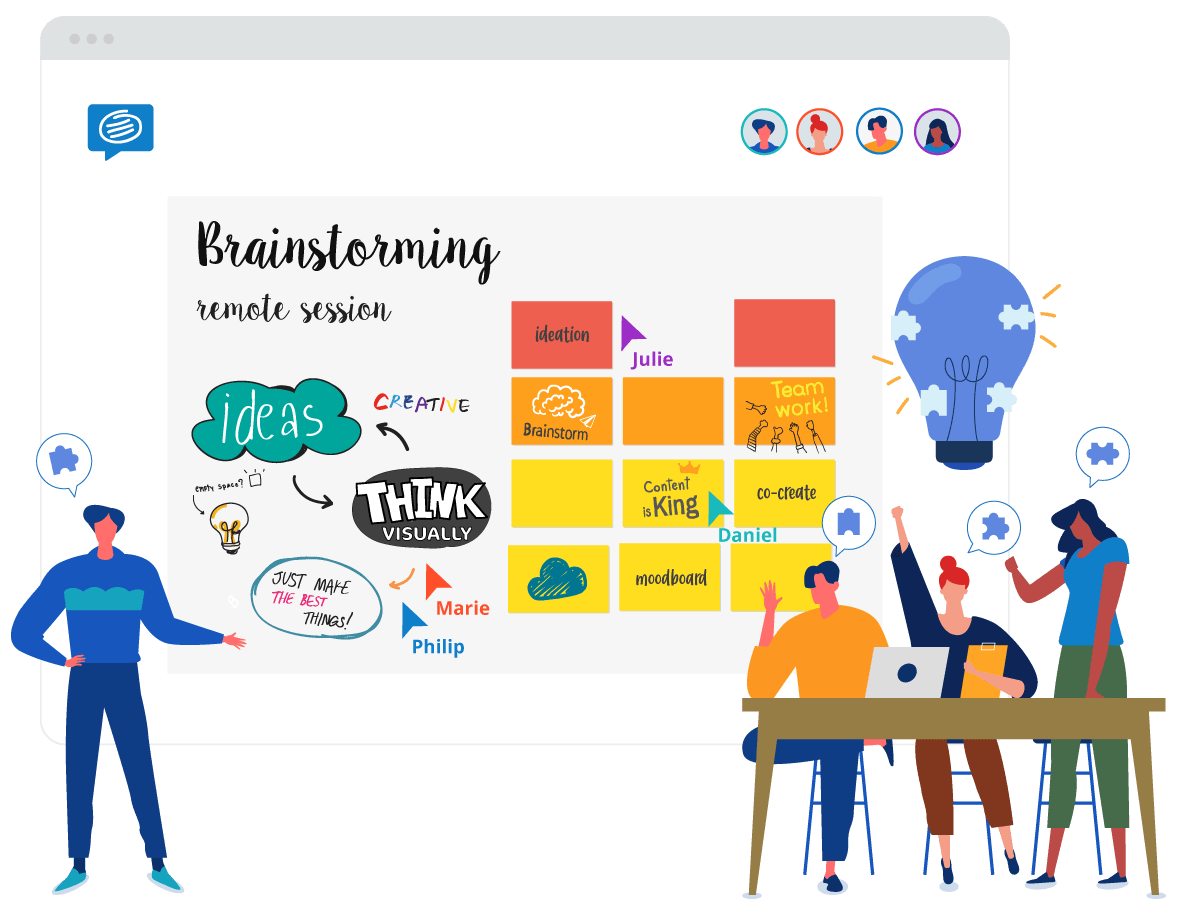
A team’s or organization’s development and success depends on finding fresh and innovative ideas.
As fun as brainstorming may be, it’s crucial to discover a structure and idea creation method that allows your group to produce significant outcomes.
The three stages of a brainstorm are idea capture, debate and critique, and selecting.
There are just a few guidelines to follow:
- Don’t point out flaws in anybody else’s ideas.
- Be open to a broad range of thoughts and ideas.
- Make use of each other’s ideas and build on them.
- If you have a crazy idea, don’t be scared to put it out there.
In order to foster invention, a judgement-free environment must be established for all participants.
Here are 5 techniques that will help your team brainstorm and come out with innovative ideas:
1. Popcorn Brainstorming
A popular method used by everyone from school teachers to CEOs to spark ideas and raise excitement behind new ventures – much like the popping of corn in a microwave!
Start by providing a question or issue statement and urge people to spend a minute’s quiet to meditate about it.
Once the minute is up, start a timer and allow everyone to submit ideas out-loud and build on each other’s ideas too. Have a single person take notes and encourage free-form, active brainstorming: no assessment, no criticism or debate yet – just ideas!
2. Flash Ideation
Quick concept generation consists of everyone writing down their thoughts in a limited period of time, then discussing, critiquing, and fleshing out their ideas. If you don’t establish a time limit for this brainstorming process, you risk losing the feeling of urgency.
When an idea is rejected before it has a chance to grow, adapt, and develop, this brainstorming activity might be useful.
Flash ideation avoids the inevitable, premature rejection of ideas by enabling everyone to record their thoughts before the criticism starts.
To avoid individuals from talking themselves out of an idea before sharing it with a group, a classic brainstorming mistake, the time limit might be helpful.
3. Eidetic Imagery
First and foremost, begin with intension setting:
Make sure everyone closes their eyes and pull forth the first eidetic image. For example- the ultimate smartphone. Once the image is there, the team can start building upon adding more features that may can been added in the existing design.
Then, you’ll randomly ask a member of the team to show you precisely how they’ve improved their vision of the ultimate phone design and record their thoughts.
There will be hundreds of fresh tangible suggestions, from color to features to size, by the conclusion of the exercise.
4. Brainwriting
If you’re looking for a way to get everyone involved, even those who like to think slowly and methodically, brainwriting is a terrific way to do just that.
Everyone takes out a piece of paper and begins to scribble down their thoughts in silence. It is possible to establish a timeframe and/or a minimum number of ideas for each participant.
Each participant contributes to and develops on the thoughts of the person next to them by passing their paper to them. Repeat this process until you’ve passed the documents to all of your members.
Put all your thoughts on a whiteboard and have a discussion after you’re through.
(Note: Make sure the papers are anonymous so that no one feels judged or embarrassed. There is less of a sense of reluctance to share ideas when this is done.)
5. Starbursting
This is a technique for facilitating group brainstorming by asking specific questions related to the subject being discussed.
Create a six-pointed star to use as a jumping off point. Put a space in the center of your brainstorming sheet to jot down the problem or topic you’re attempting to address.
As a final step, identify each of the star’s points with
“Who?”
“What?”
“How soon?”
“Where are you located?”
“What for?” and “How for?” are two often asked questions.
Ask yourself questions such, “What do our customers want? When will the product be delivered? And what timetable do we need to make this happen? “, using each of the bullet points above.
These questions elicit further thoughts and ideas, allowing you to build a basic solution roadmap.
Akasa Coworking spaces are active in Bangalore, Kolkata, Noida and Siliguri.
Be a part of our community and make the most of flexible workspaces and solutions to propel your business ahead.

